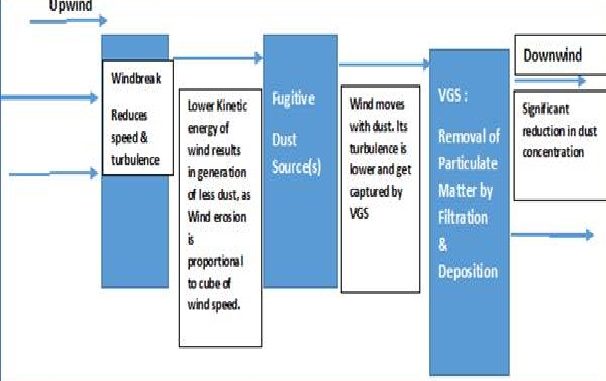
Central Mine Planning and Design Institute Limited (CMPDIL), Ranchi (a consultancy subsidiary of Coal India Limited), has invented a “System and Method for Controlling Generation and Movement of Fugitive Dust” to minimize and control the fugitive dust in mining areas and obtained a patent for the same in December 2022 (Patent No. 416055).
The Ministry of Coal said that this invention can be used in mines, thermal power plants, railway sidings, ports, and construction sites where coal, other minerals, or fugitive materials are stored under the open sky. Apart from reducing dust generation from open sources, it will also provide noise attenuation.
Coal and lignite PSUs under the Ministry of Coal consistently strive to produce quality coal in an environmentally responsible manner to meet the country’s energy needs. To prevent or mitigate air pollution caused by coal mining and related activities, coal and lignite PSUs are adopting various measures. Fugitive dust is a form of particulate matter that contributes to air pollution that is generated from various sources that are exposed to air and are not discharged into the atmosphere through a confined flow stream.
The present invention relates to the synchronized application of windbreaks (WB) and vertical greenery systems (VGS) for reducing the generation and dispersion of fugitive dust. The WB and VGS are erected in the upwind and downwind directions for the fugitive dust source(s), respectively. The WB reduces the speed of the wind approaching the source, and hence, the intensity of the ambient air to pick up dust while blowing over the source. The VGS acts as a filter and reduces the quantity of the residual dust moving along with the wind towards the receptors in the down-wind direction. Therefore, there is a significant reduction in the concentration of dust in the ambient air at various receptors located in the down-wind direction. This system has depicted in the figure below:
Disclaimer: We donot claim that the images used as part of the news published are always owned by us. From time to time, we use images sourced as part of news or any related images or representations. Kindly take a look at our image usage policy on how we select the image that are used as part of the news.


